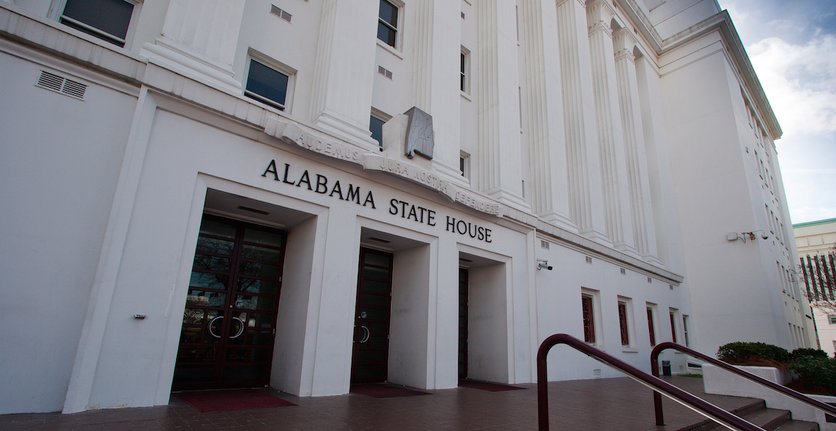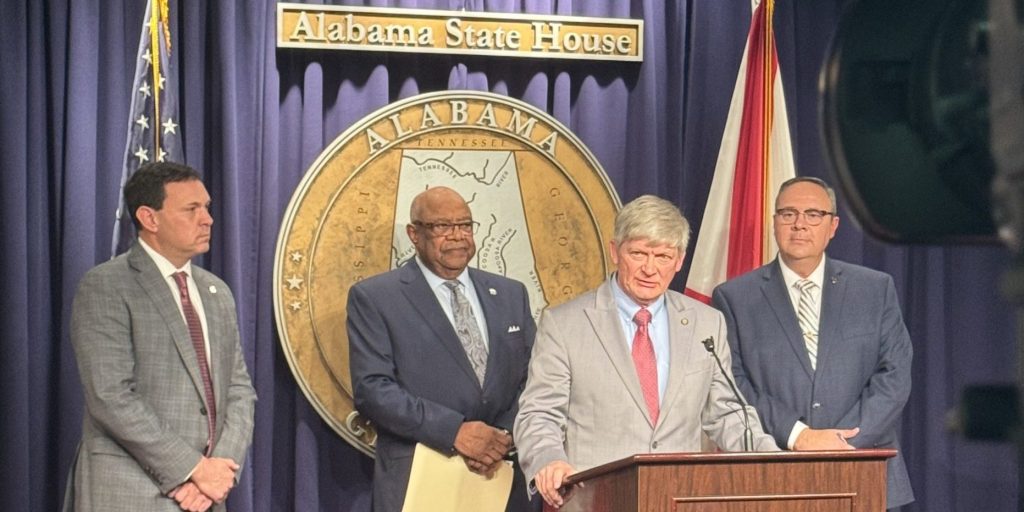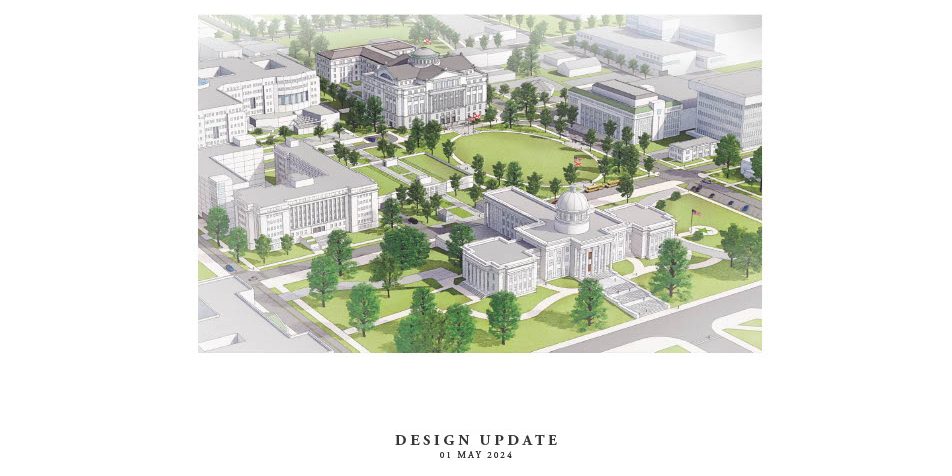For 30 days within a period of 105 calendar days, the Alabama State House at 11 South Union Street in Montgomery is the busiest building on Goat Hill as lawmakers, staff, lobbyists, media, tour groups and activists all converge for the annual legislative session.
The actual building, constructed in 1963 to serve as offices for the Alabama Highway Department, leaves much to be desired as it is fraught with mold and other shortcomings that pose a risk to the public. What was meant to be a temporary move in the 1980s as work was being done in the actual State Capitol across the street has remained the permanent meeting place for the Alabama House of Representatives and the Alabama Senate.
However, there seems to be no political will to advance any proposal for a new structure, which seems to be long overdue.
During an interview last month, Sen. Jabo Waggoner (R-Vestavia Hills), who has had an off-and-on career in the Alabama legislature spanning the past six decades, said not to expect movement on a new facility “any time soon.”
“It’s a subject of discussion, and it’s probably needed, but it would be a very expensive ordeal,” Waggoner explained.
The possibility was broached last year when Gov. Kay Ivey used a proposal as a political weapon in a fight for control over CARES Act coronavirus relief funding, which further solidified the subject’s toxicity in the eyes of the public.
“I have already seen one ‘wish list’ that includes a new $200 million statehouse for the Legislature,” the Governor said at the time. “To me, that is totally unacceptable and not how President Trump and Congress intended for this money to be spent.”
However, as lawmakers are now less than a month away from reconvening for the 2021 regular session, questions about safety go beyond the existing hazards as the nation is in the throes of the COVID-19 pandemic.
Will the existing structure be adequate for the legislature to tend to the unfinished business of the 202o regular session that was cut short due to the pandemic? According to some, it has led to an “imbalance” within state government?
Time will tell for the answer to that question. However, as for a new structure, such an effort is complicated according to State Rep. Craig Lipscomb (R-Gadsden), a practicing architect and graduate of Auburn University’s College of Architecture, Design and Construction.
During an interview with Mobile radio’s FM Talk 106.5, Lipscomb laid out how the current situation came to be.
“[T]hat building, which is currently the State House, is one of six concrete buildings in Montgomery,” he explained. “They were all kind of built around the same time. I think actually think that building was the Highway Department built somewhere around 1963. It’s knocking on 60 years old now. In the early 80s, around 1984, I guess they relocated the Highway Department elsewhere. And they temporarily put all the legislators in that building because the intention was to physically connect a brand new structure to house the House and the Senate and LSA, and all of those other functions that are associated with it because previously, all of the representation was located in the Capitol. And if you’ve ever been in the Capitol, you can imagine how that was.”
“I can’t even begin to imagine how that worked,” Lipscomb continued. “There’s just not enough room for an extra couple of hundred people to reside in there. So, they needed a new building. And constitutionally, it had to be physically attached to the Capitol. And so, at the time, the intention was to put them in that old Highway Department building. And meanwhile, they could get some architectural work done. They would design a new State House to reasonably match the aesthetics of the Capitol. They would interconnect those two — probably close down the street between those two buildings, and take down or demolish [the existing statehouse]. Even back then, it was in pretty poor shape, and I think it is in worse shape now.”
The Etowah County lawmaker insisted there was a practical approach to building a new facility and explained why the existing Alabama State House conditions are as such, which could eventually be a liability for the state.
“We don’t need a Taj Mahal,” he said. “We just need a safe, economic structure to reside in,” he said. “You have got to understand — that building being concrete — and I’m going to speak a little architecture here — concrete is porous, and it inherently wicks in moisture. And so what’s happening is that envelope the building has, that moisture is getting into it, and it is not getting back out. That’s exacerbated by the fact that you have got a heating and cooling system in there that’s rather dated, inefficient. There’s not enough fresh air in the building, etc., and so that mold continues to grow within the wall cavity of the building. Henceforth, everybody that resides in there on a regular basis — talking about all the staffers, everybody who is in there aside from the legislative body who stay there year-long — they have constant sinus issues. There’s a lot of them that have had to have sinus surgery, and I know of one or two people that have had to have numerous sinus surgeries. It is purely based upon the environmental conditions of that building. Had it been anything but a governmental building, I have no doubt they would have been sued by now because — where in the world do you encounter that? That’s an anomaly these days.”
Lipscomb insists that an analysis of legislative needs for a new structure would have to be completed before assigning a price tag. However, he argued that it would ultimately save the state money on maintenance, renovations, and utility costs in the long run.
“From an architectural perspective, what you have to do is you have to start with a program,” he explained. “A program is kind of like a checklist of the kind of spaces you need in a building. It kind of tells that you need rooms for x, y and z, and those rooms need to be a particular size or have particular features that suit the needs of the individual who is going to be occupying that space. Once you have created that program, now you have got to set a guideline to go by in the early stages of design. You can begin to estimate how much square footage. You can begin to estimate the amount of circulatory space, both horizontal and vertical quantity of the rooms, the size of the rooms, and all of that kind of stuff — and that would be the first step — basically taking an analysis of what you would need out of a structure to facilitate the legislative needs of the state of Alabama.”
“Once you put that down on paper, you can get some ballpark ideas of where you’re heading as far as the cost of construction is concerned because you can apply some rule of thumb square foot costs here,” Lipscomb added. “I don’t know what those would be. We’re certainly not going to be spending RSA kind of money here. You’ve seen those buildings. They’re very fine buildings with really nice finishes. I don’t think that’s what we’re looking for. It’s definitely not going to be a cheap structure — but I think I can tell you this without too much hesitation: When you’re dealing with an existing building that’s nearly 60 years old, it’s highly inefficient. I don’t know how many millions of dollars we must put into the cost of maintenance and utilities just to the fact it’s poorly insulated, just to the fact they’re having constant renovations and whatnot. And when you’re in that situation, when you’re tossing money out the window, why would you not have a fresh, new structure that would do everything that you would want it to do?”
How does Alabama’s State House chamber measure up to other states’ chambers? See below:
@Jeff_Poor is a graduate of Auburn University and the University of South Alabama, the editor of Breitbart TV, a columnist for Mobile’s Lagniappe Weekly, and host of Mobile’s “The Jeff Poor Show” from 9 a.m.-12 p.m. on FM Talk 106.5.













